Ten Epochs of Church History (10 vols.)
Digital Logos Edition
Overview
This collection presents detailed works by nineteenth-century writers describing 10 distinct eras of church history—from the missionary journeys of Paul to the Anglican Reformation. When it was released, the Ten Epochs of Church History series addressed a burgeoning sense of historic inquiry that marked that time period. Unlike the scholarly histories that came before, these fascinating accounts were written in hopes of engaging parishioners of all ages and backgrounds.
Volume one begins in AD 29 with the work of the apostle Paul and the first missionary journeys to Europe and Asia. The series continues with descriptions of Eusebius, Clement, and several other Church Fathers, as well as ecumenical councils that addressed major doctrinal issues throughout the Post-Apostolic age. Next, the influences of both Charlemagne and Hildebrand are examined followed by a detailed description of the Crusades. The informative yet accessible tone continues in volumes on the Renaissance, Great Western Schism, Reformation, and Anglican Reformation.
Before its publication, few church documents offered impartial, engaging historical narratives for the churchgoer. This collection presents both detailed factual information and the perspectives of prominent theologians of the time on that history—a valuable combination for any modern reader or scholar. The Logos edition makes this resource even more relevant, saving you time and strengthening your study. Move quickly from the table of contents to your desired section, and search entire volumes and collections by topic, title, or Scripture reference.

Key Features
- Contains 10 volumes of engaging historical description and analysis
- Covers major eras of church history from the Apostolic age to the Anglican Reformation
- Includes extensive indexes in each volume
Product Details
- Title: Ten Epochs of Church History
- Editor: John Fulton
- Publisher: Charles Scribner’s Sons and Christian Literature Company
- Volumes: 10
- Pages: 4,640
Individual Titles
- The Apostolic Age: Its Life, Doctrine, Worship and Polity by James Vernon Bartlet
- The Post-Apostolic Age by Lucius Waterman
- The Ecumenical Councils by William Porcher DuBose
- The Age of Charlemagne by Charles L. Wells
- The Age of Hildebrand by Marvin R. Vincent
- The Age of the Crusades by James M. Ludlow
- The Age of the Renascence by Paul Van Dyke
- The Age of the Great Western Schism by Clinton Locke
- The Reformation by Williston Walker
- The Anglican Reformation by William Clark
This title is included in the following collections
You can save when you purchase this product as part of a collection.
Logos 6 Anglican Diamond Legac...
$2,999.99$2,999.99Logos 5 Anglican Diamond Legac...
$2,999.99$2,999.99Logos 6 Anglican Portfolio Leg...
$4,749.99$4,749.99Logos 9 Anglican Portfolio Leg...
$4,749.99$4,749.99
- $24,999.99

Contents:
- Book I: The First Generation, AD 29–62
- I. Early Palestinian Days
- II. The Field Broadens
- III. The First Missionary Journey
- IV. The First European Mission
- V. Work in Asia and Greece
- VI. Paul—Imprisonment and Martyrdom
- VII. Later Palestinian Days
- Book II: The Age of Transition, AD 62–70
- I. Judaism and the Empire
- II. Palestine and the Epistle to Hebrews
- III. Asia Minor and First Peter
- IV. North Syria and the Didaché
- V. The Epistle of Jude and II Peter
- VI. Early Written Gospels
- Book III: The Second Generation, Trials and Consolidation
- I. After the Storm
- II. The Apocalypse of John
- III. Empire Versus Church
- IV. “The Churches of Asia”
- V. Rome and Corinth
- Book IV: Church Life and Doctrine
- I. Church Fellowship
- II. Organization and Discipline
- III. Types of Doctrine
- Literary Appendix
James Vernon Bartlet (1863–1940) was an ecclesiastical historian of the nineteenth and twentieth centuries. He taught at Mansfield College, Oxford, and contributed articles to the eleventh edition of the Encyclopedia Britannica.
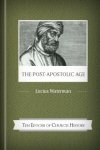
Contents:
- I. The Character and Boundaries of the Post-Apostolic Age
- II. Sources of History for the Beginnings of the Post-Apostolic Age
- III. The Historic Episcopate: Rival Theologies in Modern Times
- IV. The Historic Episcopate: The Witness Called
- V. The Church and the Empire I
- VI. The Church and the Empire II
- VII. The Church’s Rivals: Ebionism and Gnosticism
- VIII. Three Interior Strifes: The Paschal Question, Montanism, Sabellianism
- IX. Early Theologians of the West: Irenaeus, Tertullian, Hippolytus
- X. Early Theologians of the East: The School of Alexandria, Clement, Origen
- XI. The Church and the Empire from Commodus to Diocletian
- XII. The Forty Years’ Rest and the Tenth Wave
- XIII. Last Words of Some Workings of the Church’s Mind in the Post-Apostolic Age
Lucius Waterman (1851–1923) was an American pastor, theologian, and professor. He also served as the rector at St. Thomas Church in Hanover, New Hampshire. He is the author of The Post-Apostolic Age and The Primitive Tradition of the Eucharistic Body and Blood.
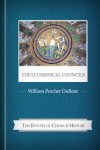
Contents:
- Preface
- I. The Christology of the New Testmanet
- II. The Natural Basis of a Scriptural and Catholic Christology
- III. Ebionism and Docetism
- IV. Sabellianism and the Beginning of the Trinitarian Discussion
- V. The Origin and Rise of Arianism
- VI. The Council of Nicea
- VII. Arianism after the Council of Nicea
- VIII. The First General Council of Constantinople
- IX. Apollinarianism
- X. Nestorianism
- XI. The Council of Ephesus
- XII. Eutychianism and the Council of Chalcedon
- XIII. The Monophysites and the Second Council of Constantinople
- XIV. The Monothelites and the Third Council of Constantinople
- XV. Adoptionism
- XVI. The Christological Goal
William Porcher DuBose (1836–1918) was born into a wealthy Huguenot family in South Carolina. He attended the Citadel and the University of Virginia, where he studied Greek and other languages that later supported his work as a theologian. When the Civil War broke out, DuBose left seminary to serve as an officer and chaplain for South Carolina. He was wounded twice at the second battle of Manassas, taken captive, and later released.
An ordained priest, he served at St. Stephen’s Episcopal Church near his home in Winnsboro, South Carolina after the war. In 1871, he became the chaplain of the University of the South, and in 1877 he began working as a professor in the department of theology he helped build. He served as dean from 1894 until his retirement in 1908.
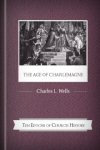
Contents:
- Preface
- Bibliography
- I. The Age of Charles the Great
- II. Rome and Her Legacy to the New Peoples of the West
- III. The Organization of Christianity and the Origin of the Papacy
- IV. The Conquest of the Empire by the German Tribes
- V. The Merovingian Monarchy
- VI. Christianity and the Church among the Early Franks
- VII. The Spread of Christianity
- VIII. The New Powers and Great Purposes of the Mayors of the Palace
- IX. Boniface, the “Apostle of Germany”
- X. Iconoclasm and the Papacy
- XI. Italy and the Papacy
- XII. Gregory III
- XIII. Karlmann and Pippin
- XIV. Relations of the Papacy with the Lombards and with the Emperor
- XV. Relations of the Papacy with the Lombards and with the Franks
- XVI. The Victory of Pippin over Aistulf
- XVII. The Final Struggle of the Lombards
- XVIII. The Work of Pippin
- XIX. The Lombard Marriages
- XX. Frankish Accounts of the Coronation
- XXI. Theories Underlying the Coronation
- XXII. Imperial Administration
- XXIII. Theological Controversies
- XXIV. Political Importance of Ecclesiastical Officers
- XXV. Closing Years
- XXVI. Intellectual Life and Development
- XXVII. Meeting of Charles and Alcuin
- XXVIII. Irish Learning
- XXIX. Larger Development under Louis the Pious
- XXX. Accession of Louis the Pious
- XXXI. Birth of Charles the Bald
- XXXII. Christian Missions and Missionaries
- XXXIII. Ecclesiastical Legislation and the Constitution of the Church in the Ninth Century
- XXXIV. The Height of the Papacy
Charles L. Wells was a professor at the University of Minnesota and later served as the dean of the Cathedral Church of New Orleans, Louisiana.
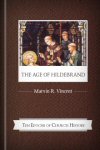
Contents:
- I. The Church and the Empire
- II. Henry III
- III. Simony
- IV. The Normans
- V. Four Popes
- VI. Cadalous
- VII. Hildebrand Pope
- VIII. The Investiture Decree
- IX. Canosa
- X. Henry Besieges Rome
- XI. Character and Policy of Gregory VII
- XII. Urban II
- XIII. Paschal II
- XIV. The Coronation Riot
- XV. The Cistercians
- XVI. Lothair the Saxon
- XVII. Mystical Piety
- XVIII. The Papacy and Roger of Sicily
- XIX. Abelard
- XX. Eugenius III
- XXI. Barbarossa
- XXII. Roncaglia
- XXIII. Thomas À Becket
- XXIV. Battle Of Monte Porzio
- XXV. Papal Transactions in France and England
- XXVI. Five Popes in Ten Years
- XXVII. The Emperor Master Of Italy
- XXVIII. Innocent III
- XXIX. Heresy Attacked in France
- XXX. Stephen Langton
- XXXI. The Albigensian Crusade
- XXXII. Innocent Abandons Otto
- XXXIII. Innocent and John Of England
- XXXIV. The Popes and Frederick II
- XXXV. The Dominicans and Franciscans
- XXXVI. The Inquisition
- XXXVII. The Universities
- XXXVIII. Boniface VIII
- XXXIX. Conclusion
Marvin Vincent, the son of a clergyman, was born in 1834 in New York. A professor at Union Theological Seminary and a pastor, Vincent was best known for his work in textual criticism and Biblical scholarship. He is the author of Word Studies in the New Testament, History of the Textual Criticism of the New Testament, and many other scholarly works.

Contents:
- Bibliography
- I. Introductory Outline of Study
- II. State of Society, Ignorance, Dullness of Life, Superstition
- III. Chivalry, Rules, Education of Knight
- IV. The Feudal System
- V. The Impoverished Condition of Europe
- VI. The Papal Policy
- VII. The Mohammedan Menace, The Rise of Islam, Saracens, Turks
- VIII. Pilgrimages, Origin and Growth of the Custom
- IX.The Story of the Crusades
- X. The First Crusade
- XI. The Crusade under the Chieftains
- XII. The Fall of Nicea
- XIII. Battle of Doryleum, Tarsus, Defection of Baldwin
- XIV. Before Antioch
- XV. The Fall of Antioch
- XVI. The Holy Lance
- XVII. On to Jerusalem
- XVIII. The Capture of Jerusalem
- XIX. Godfrey, First Baron of the Holy Sepulchre
- XX. Baldwin I, King of Jerusalem
- XXI. King Baldwin II, King Foulque, King Baldwin III
- XXII. Military Orders, Hospitallers, Templars, Teutonic Knights
- XXIII. Europe between the First and Second Crusades
- XXIV. The Second Crusade
- XXV. Nourredin, Rise of Saladin, King Guy, Queen Sibylla
- XXVI. Battle of Tiberias, Fall of Jerusalem
- XXVII. Europe between the Second and Third Crusades
- XXVIII. The Third Crusade
- XXIX. Siege of Acre
- XXX. The Coming of Philip Augustus and Richard
- XXXI. Palestine after the Third Crusade
- XXXII. The Fourth Crusade, History and Condition of Constantinople
- XXXIII. The Summons to the Fourth Crusade
- XXXIV. The Plot for the Diversion of the Crusade
- XXXV. On to Constantinople
- XXXVI. Constantinople Secured to Isaac and Young Alexius
- XXXVII. Capture of Constantinople
- XXXVIII. Founding the Latin Kingdom of Constantinople
- XXXIX. Between the Fourth and Fifth Crusades
- XL. The Fifth Crusade, Disaster of Marietta
- XLI. The Sixth Crusade, Frederick II and Pope Gregory IX
- XLII. Between the Sixth and Seventh Crusades, The Tartars, The Crismian Invasion
- XLIII. The Seventh Crusade, St. Louis
- XLIV. The Eighth Crusade, Death of St. Louis, Fall of Acre
- XLV. Results of the Crusades, Kingship, Unity of Europe, The Papacy
James M. Ludlow was a writer best known for The Captain of the Janizaries, which details the fall of Constantinople.

Contents:
- From the Return from Avignon to the Accession of Nicholas V (1377–1447)
- Introductory Retrospect
- I. The Growth of Patriotism or the Sense of Nationality
- II. New Theories of the Seat of Sovereignty and the Rising Tide of Democracy
- III. The New Learning
- IV. The Condition in which the Returning Pope Found Italy and the Patrimony of St. Peter
- V. John Wiclif of England and His Protest against Papal War
- VI. Pope and Antipope
- VII. Orthodox Demands for Union and Reform
- VIII. The Council of Pisa Makes the Schism Triple
- IX. The Council of Constance and Triumph of the Party of Conciliar Supremacy
- X. The Papal Reaction
- XI. The Spread of Humanism
- From the Accession of the First Humanist Pope to the French Invasion of Italy (1447–1494)
- XII. Nicholas V
- XIII. Calixtus III
- XIV. The New Learning Crosses the Alps
- XV. The Man of the Renascence on the Throne of St. Peter
- XVI. Innocent VIII
- XVII. Savonarola and Freedom
- From the French Invasion to the Sack of Rome (1494–1527)
- XVIII. The Household of Alexander VI
- XIX. The Fall of the House of Borgia
- XX. Humanism in Europe from the Ascension of Sixtus IV to the Death of Aleander VI
- XXI. Julius II and Leo X
- XXII. Transalpine Humanism under Julius and Leo
- XXIII. The Court of Leo X
- XXIV. The North Loses Patience with the Papacy
- XXV. Adrian VI, the Honest Orthodox Ecclesiastic
- XXVI. The Sack of Rome
- A List of the Popes and Antipopes
- A List of the Humanists Mentioned
Paul Van Dyke (1859–1933) was an American historian and Presbyterian minister. He taught church history at Princeton Theological Seminary from 1889–1892 and later joined the faculty of Princeton College where he was the chair in modern European history.

Contents:
- Preface
- I. The Fourteenth Century
- II. Death of Boniface, Benedict XI
- III. The Fall of the Templars
- IV. Avignon
- V. John XXII
- VI. Benedict XII
- VII. Clement VI
- VIII. Rienzi
- IX. The Black Death, The Flagellants
- X. The Jubilee of 1350, Death of Clement
- XI. Urban V, Gregory XI
- XII. Death of Gregory XI
- XIII. Urban VI and Clement VII
- XIV. Clement VII, Boniface IX
- XV. Benedict XIII, Innocent VII
- XVI. The Council of Pisa
- XVII. Alexander V
- XVIII. John XXIII
- XIX. The Council of Constance
- XX. Council of Constance
- XXI. The Trial of John Huss
- XXII. The Affairs of Gregory and Benedict
- XXIII. The Arrangements for the Election
- XXIV. The Effects of the Schism
- XXV. John Wyclif
- XXVI. Close of Council of Constance
- XXVII. The Return of Martin V to Rome and His Triumph
- XXVIII. The Hussite War
- XXIX. Eugenius IV and the Council of Basel
- XXX. Continuation of the Council of Basel
- XXXI. Continuation of the Council
- XXXII. The Council of Ferrara and Florence
- XXXIII. The German Mystics
- XXXIV. The Inquisition in the Fourteenth Century
- XXXV. Literature and Arts in the Fourteenth Century
Clinton Locke was the rector of Grace Episcopal Church and the founder of St. Luke’s Hospital in Chicago.

Contents:
- Prefatory Note
- I. The New Wine in the Old Bottles
- II. The Spanish Awakening
- III. The Saxon Revolt
- IV. The Revolt in German Switzerland
- V. The Lutheran Churches of Germany
- VI. Calvin and His Work
- VII. The Protestant Movement Carried to Other Countries
- VIII. The More Radical Reformers
- IX. The Counter-Reformation
- X. The Struggle for Mastery
Williston Walker (1860–1922) was an American church historian and author of A History of the Congregational Churches in the United States, John Calvin, and several other works. He worked at both Hartford Seminary and Yale University.
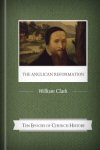
Contents:
- I. The Anglican Church before the Conquest
- II. The Norman Kings
- III. The Plantagenets
- IV. Wyclif and the Lollards
- V. The Church before the Reformation
- VI. Precursors of the Reformation: Colet, More, Erasmus
- VII. Early Days of Henry VIII
- VIII. Henry and Catharine
- IX. The Supremacy
- X. The Religious Houses
- XI. Reformation and Reaction
- XII. Edward VI and the First Prayer Book
- XIII. The First English Ordinal
- XIV. Foreign Influences and the Second Prayer Book
- XV. Accession of Mary
- XVI. The Marian Persecution
- XVII. The Elizabethan Reform
- XVIII. The Consecration of Parker
- XIX. Queen Elizabeth and Archbishop Parker
- XX. The Articles OF Religion
- XXI. The Advertisements
- XXII. Grindal and the Prophesyings
- XXIII. Whitgift and Puritanism
- XXIV. Richard Hooker
- XXV. King James I and Archbishop Bancroft
- XXVI. Archbishop Abbot and Calvinism
- XXVII. King Charles I and Archbishop Laud
- XXVIII. The Long Parliament and the Rebellion
- XXIX. The Commonwealth
- XXX. The Work of the Restoration
William Robinson Clark (1829–1912) was a Scottish-Canadian theologian and minister of the Church of England. In 1882, he accepted a teaching post at Trinity College in Toronto, Ontario. He was a sought-after preacher and teacher and was considered a leading theologian in North America at the turn of the twentieth century. He is the author of many theological and historical works.
About the Editor
John Fulton was an Episcopal author and lecturer, and editor of The Church Standard.
Reviews
4 ratings

Daniel Caballero
2/23/2021
AeliusCicero
6/19/2014

Roberto L. Galvão
6/3/2014

Bill Shewmaker
5/9/2014